• Chiefs strengthen WR corps ahead of trade deadline: A deal for Titans wide receiver DeAndre Hopkins might cost Kansas City a Day 2 pick but would bolster a lackluster receiving group.
• Edge defenders are on the move: We project what potential trades for Chase Young, Brian Burns, Danielle Hunter, Josh Uche and Carl Lawson look like.
• Draft and trade for yourself: Try PFF's Mock Draft Simulator — trade picks and players and mock for your favorite NFL team.
Estimated Reading Time: 16 minutes
We kicked off the lead-up to the 2023 NFL trade deadline with a broad look at the top potential trade targets across the NFL, and now we get into what those deals could look like. You can execute all of these trades, and over a thousand more, on the PFF Mock Draft Simulator.
Note: All contracts listed are based on if the player was acquired just before the deadline on Oct. 31.
Tennessee Titans WR DeAndre Hopkins → Kansas City Chiefs
- Trade compensation: 2024 third-round pick
- Contract acquired: Two years, $15,247,222 ($647,222 fully guaranteed)
Hopkins has missed time the past few seasons due to injuries and a suspension but is still one of the more reliable receivers across the NFL. Over the past two shortened seasons and so far this year, his 82.1 receiving grade still ranks 25th among wide receivers with at least 250 snaps. Most importantly, his 3.4% drop rate places 26th among 135 wide receivers with at least 50 targets over the span.
Chiefs wide receivers have a 7.3% drop rate this season, the fifth-worst mark in the NFL. Lastly, Hopkins' 1.95 yards per route run since 2021 ranks 21st among qualifying wide receivers, so while he may not be at his peak, he’s still a very good player.
Tennessee will not have to convert Hopkins’ salary into a bonus to facilitate this deal, but they should effectively view any potential trade return as if they did. The Titans paid Hopkins a $9.815 million signing bonus this offseason and his 2023 salary is the veteran minimum. So, for all intents and purposes, they are providing this benefit to an acquiring team, and Kansas City was one of a few contending teams that refused to meet Hopkins’ contractual demands before the season.
At the end of the day, Hopkins can still earn $12 million in 2023 cash and play for a contender, and the Chiefs can pay around $1.25 million while parting ways with a draft pick that is likely going to fall in the 90s.
Tennessee Titans S Kevin Byard → Philadelphia Eagles
- Trade compensation: 2025 third-round pick
- Contract acquired: Two years, $16,322,222 ($0 guaranteed)
Byard’s 2023 salary was reduced to $4 million before the season, which makes him significantly easier to trade at the deadline. And while he’s expressed a desire to remain in Tennessee for the rest of his career, perhaps the chance to contend for a Super Bowl is too hard to pass up.
This is a tough trade valuation, with just two safeties aged 30 or older traded since 2010 — and both for Day 3 picks. Byard is a better player than both at this stage in his career by a comfortable margin, but there may not be a middle ground where Tennessee is happy with the return and Philadelphia doesn’t feel like they are giving up too much. The Eagles also do not have a third- or fourth-round pick in 2024. Ultimately, the Eagles are chasing a ring in what could potentially be the final season for close to a half-dozen franchise legends, so we think they’re willing to be aggressive here.
Eagles starting free safety Reed Blankenship, the team's leading tackler through Week 6 with a 79.2 coverage grade, is dealing with a rib injury, so they have been looking into defensive backs across the league, which may not be a great sign.
Byard was PFF’s highest-graded safety in 2021 with a 90.4 mark and followed that up in 2022 with an 81.0 coverage grade, picking off nine passes over the past two seasons with eight more pass breakups. As a tackler, Byard has earned tackling grades above 80.0 with missed tackle rates below 7% in six straight seasons. He’s as reliable on the back end as any player in football.
The bigger splash options here are Arizona Cardinals safety Budda Baker or Denver Broncos safety Justin Simmons. Byard took a pay cut before the 2023 campaign, whereas Baker got more money and assurances from the Arizona Cardinals and Simmons has a $14.4 million 2023 salary. Baker’s stint on injured reserve with a hamstring injury further complicates matters, but he certainly would represent a good fit for this Eagles defense.
Cardinals head coach Jonathan Gannon was the Eagles' defensive coordinator last season, so Baker has familiarity there. However, Philadelphia doesn’t have many ways to clear significant cap space at this juncture, so inheriting a big contract — or asking Denver or Arizona to retain a ton of salary instead — complicates matters tremendously.
Washington Commanders EDGE Chase Young → Baltimore Ravens
- Trade compensation: 2024 third-round pick, 2025 third-round pick
- Contract acquired: One year, $561,111 (fully guaranteed)
You can make a legitimate case that this trade is way too much and also too little. It’s arguably too much because there’s a very realistic scenario where Young becomes an unrestricted free agent after the season and is free to sign with any team for zero draft pick capital. It’s arguably too little because Washington could, in theory, extend fellow edge defender Montez Sweat before the franchise tag deadline and then place the tag on Young.
The Ravens are already in the top three of cash spending for 2023, so pulling off another blockbuster like they did last year in acquiring linebacker Roquan Smith may be tough to accomplish. Giving up premium draft capital also makes it harder to add cheap young talent, further compounding the issue. So, as much as Ravens fans may have wanted to see a move for Carolina Panthers edge defender Brian Burns in this article, we went with a far cheaper option both contractually and in terms of draft capital. From Baltimore’s perspective, they’re effectively buying the right to franchise tag or extend Young after the season.
Another key part of the equation is that the Ravens could choose to let Young walk after the season and recoup a compensatory pick, something they do as well as any franchise in the league. They’d really just move down a bit in the draft one year later while parting ways with a third-round pick for a very talented mercenary pass-rusher during a playoff push. Among edge defenders with at least 50 pass-rush snaps this season, Young’s 20.6% pass-rush win rate and 18.2% pressure rate rank ninth. Perhaps most importantly, given his recent injury history, we’re not just talking about efficiency on a small sample, as Young’s 31 total pressures are the fifth most in the NFL among edge defenders despite his missing Week 1.
We discussed this offseason when analyzing the fifth-year option decisions for 2020 first-round picks how Washington was taking a gamble by declining Young’s option and also not extending fellow edge rusher Montez Sweat. NFL teams have only one franchise tag at their disposal each offseason, and if the team did try to engage in extension talks with Sweat or Young, he’d hold a ton of leverage.
Young and Sweat also share representation and every player benefits from reaching the open market, so there’s no real reason to entertain an extension on one player just to free up the franchise tag for the other player, unless the team is willing to pay an exorbitant price. Washington really backed themselves into a corner here. Netting only a 2025 compensatory pick when one of the two signs elsewhere in free agency is a poor process when they could recoup potentially more in a trade. Here, they’re effectively getting a 2024 third-round pick and the 2025 third-round pick that replaces the compensatory pick.
As always, a coaching staff/front office that may be fighting to keep their jobs can be averse to letting go of premium talent, but this move makes too much sense for the long-term of the franchise, and perhaps new owner Josh Harris puts his thumb on the scale.
Carolina Panthers EDGE Brian Burns → Los Angeles Rams
- Trade compensation: 2024 first-round pick, 2025 second-round pick, 2026 fourth-round pick
- Contract acquired: One year, $8,895,555 (fully guaranteed)
A new-look Rams team is exceeding expectations by a good margin so far in 2023 and should be looking to add a premium talent to a roster that ranks dead last in cash spending as opposed to first in cash spending in 2022, when they offered two first-round picks and a second-round pick for Burns. This offer removes one of the first-round picks from the equation, as we’re a year later into Burns’ career with zero cheap years remaining. From Carolina’s perspective, they replace the 2024 first- and 2025 second-round picks they sent to Chicago in the Bryce Young trade.
Burns has a 77.2 pass-rush grade, 15 quarterback pressures and five sacks through Week 6. He has earned a 70.0-plus pass-rush grade with at least 50 quarterback pressures and nine sacks in three straight seasons, and he’s roughly on pace to hit all of those marks once again in 2023.
Last season, while playing on his fifth-year option, edge defender Bradley Chubb was moved along with a fifth-round pick from the Denver Broncos to the Miami Dolphins for first- and fourth-round picks plus running back Chase Edmonds. We view Burns in a more favorable light than Chubb, as he’s been healthier and more productive, but that compensation package can provide something of a benchmark to work from here. Chubb’s fifth-year option was $12.716 million, whereas Burns’ is $16.012 million, meaning the Dolphins and Rams would acquire similar contracts at the deadline.
Denver Broncos WR Jerry Jeudy → Carolina Panthers
- Trade compensation: 2024 third-round pick, 2025 fourth-round pick
- Contract acquired: Two years, $14,476,870 (fully guaranteed)
Jeudy had a bizarre run-in with Panthers legendary wide receiver Steve Smith Sr. before the Denver Broncos took on the Kansas City Chiefs on Thursday Night Football, but we nonetheless have the two teams here finding a way to navigate this deal. Jeudy has been fairly productive for Denver this season, with 20 receptions for 222 yards, but has a 66.5 receiving grade — the lowest since his rookie season — and has yet to find the end zone. The Broncos may want to add draft capital after trading a 2023 first- and 2024 second-round pick for head coach Sean Payton and a 2024 third-round pick.
In 2022, Jeudy’s 77.9 receiving grade ranked tied for 21st, his 6.2 yards after the catch per reception ranked fourth and his 2.18 yards per route run ranked 11th. The former first-round pick out of Alabama still has No. 1 wide receiver potential, but Denver may be willing to sell at a discount as they look to overhaul their roster. What would really help the Broncos entertain this idea is the continued emergence of rookie wideout Marvin Mims, who has not played a ton of snaps but has been remarkably efficient.
Another attractive component of acquiring Jeudy is that he has a very manageable $12.987 million 2024 fifth-year option and his new team would have the ability to either extend him off a strong half-season or see things through for another year. Adam Thielen is enjoying a career year in Carolina, but the other three receivers on the roster with 50-plus snaps all have receiving grades below 60.0.
A young target who can create separation and rack up yards after the catch in the open field is exactly what Bryce Young needs to continue the growth he’s exhibited over the past two weeks.
Minnesota Vikings EDGE Danielle Hunter → Jacksonville Jaguars
- Trade compensation: 2024 fourth-round pick, 2025 third-round pick, 2025 fourth-round pick
- Contract acquired: One year, $6,437,908 (fully guaranteed*)
The acquired contract here is actually a bit more expensive, given Hunter has incentives tied to sacks. He already has eight on the season, but that won’t make an impact until after the 2023 season.
The thinking here is pretty simple: This is very likely the last season before Trevor Lawrence is earning in the neighborhood of $60 million per year on a second contract, so before that happens, the 4-2 Jaguars should take advantage of a weak AFC South — which may not be weak much longer with Houston Texans quarterback C.J. Stroud playing great football — and add an impact player for a deep playoff push.
Hunter was one of just three players in 2022 to rack up at least 60 quarterback pressures and 40 defensive stops, adding 12 sacks and an 86.3 overall grade. So far in 2023, Hunter has 21 quarterback pressures and eight sacks, though a good bit of that production has come on clean-up work as opposed to consistently winning pass-rush snaps early on. Nevertheless, he’s a very talented all-around player who turns only 29 years old two days before the trade deadline. On passing downs, Hunter has the size to kick inside on occasion, akin to Arden Key in Jacksonville last year, or the team can use Travon Walker in that role.
An acquiring team may not just be adding a mercenary for a 2023 playoff push but could explore an extension before Hunter’s contract voids next March. In Jacksonville’s case, they don’t figure to be super active in free agency with in-house extensions for Lawrence and wide receiver Calvin Ridley looking like top priorities, so the mercenary approach while recouping a compensatory pick could be enough.
New England Patriots EDGE Josh Uche → Seattle Seahawks
- Trade compensation: 2024 third-round pick, 2025 fifth-round pick
- Contract acquired: One year, $747,172
This is a flawed exercise, and we acknowledge that, but if we remove the Giants game where Seattle teed off on the worst offensive line in the NFL with a quarterback who has the second-worst pressure-to-sack rate in the league, the Seahawks' edge defender group would rank 31st in the NFL with a 13.6% pressure rate. It’s not fair to just strip this dominant performance out of the equation, but it illustrates the lack of a consistent rush off the edge that has existed in their other four contests.
Seattle has two young edge rushers coming along nicely in back-to-back second-round picks Boye Mafe and Derick Hall, but pending free agent Darrell Taylor’s 4.2% pressure rate ranks 107th out of 110 edge defenders with at least 50 pass-rush snaps on the season. If the Seahawks want to win games in January, they need more consistent pass-rush juice, even if it’s while adding yet another player to a rotation.
Josh Uche generated 56 quarterback pressures and notched 12 sacks on just 285 pass-rush reps in 2022, with his 19.2% pass-rush win rate ranking sixth among edge defenders and his 20.7% pressure rate placing second. The thinking here is that New England will struggle to find common ground in a valuation for a part-time player, with Uche logging just 373 total snaps in 2022. He’s on pace for a larger snap share in 2023 following the injury to Matthew Judon but still didn’t log even 20 snaps in a Week 6 loss to the Las Vegas Raiders.
New England could probably find a way to strike a deal on an extension this upcoming offseason, as they’re currently projected to have the most 2024 cap space and the third-lowest 2024 cash spend. However, if the Patriots really want to hit the reset button, Uche is the exact kind of player you can get a playoff contender to overspend on at the deadline since he fills such a valuable role.
New York Jets EDGE Carl Lawson → Las Vegas Raiders
- Trade compensation: 2024 fifth-round pick
- Contract acquired: $3,921,568 ($3,333,333 fully guaranteed)
Lawson has become the odd man out in a deep and talented edge defender group but would provide a serious pass-rush boost to an acquiring team.
In 2022, Lawson’s first season back from a torn Achilles, he earned a 72.8 pass-rush grade with 49 pressures and eight sacks. Injuries have impacted his career, but he’s still a very productive player off the edge. The Athletic's Dianna Russini reported that the Raiders are active in the edge rusher market as we approach the deadline, which makes sense with Chandler Jones no longer on the team and first-round rookie Tyree Wilson’s 33.7 grade ranking 132 out of 134 edge defenders with at least 50 snaps in 2023. Wilson has four pressures and zero quarterback hits or sacks on 101 pass-rush reps, and his 2.1% pass-rush win rate ranks fourth worst at the position.
Lawson signed a reworked contract heading into the 2023 season that lowered his salary to $6 million, so he’s a far more affordable option for an acquiring team, which is an added benefit for the Raiders. Las Vegas can effectively buy low on a player who would be starting for several other teams. And at 3-3, the Raiders are in the mix for an AFC wild-card bid.
Tennessee Titans CB Kristian Fulton → Pittsburgh Steelers
- Trade compensation: 2025 fifth-round pick
- Contract acquired: One year, $742,692
Fulton is struggling mightily in the fourth and final season of his rookie contract, but a change of scenery where he can play behind one of the league’s elite defensive lines could help him turn his young career around. The only cornerbacks under contract beyond 2023 in Pittsburgh are 33-year-old Patrick Peterson and rookies Joey Porter Jr. and Cory Trice. Trice suffered a torn ACL in the team’s first padded practice, and the uber-talented prospect out of Purdue fell to the seventh round because of injury concerns to begin with.
Among 83 cornerbacks in 2023 with at least 100 snaps lined up out wide, Levi Wallace’s 48.2 grade ranks 72nd and Patrick Peterson’s 59.6 mark ranks 54th. Porter has flashed big time when on the field, but adding another young option to, at the very least, get a look for 2024 and beyond makes a lot of sense for the Steelers.
The only other young, starting-caliber cornerback who we’d think may be available is Chicago Bears cornerback Jaylon Johnson. His services should come at a much steeper price, and it’s entirely possible Chicago doesn’t yet want to give up on a talented young player, even in the midst of a contract year.
Carolina Panthers WR Terrace Marshall Jr. → Los Angeles Chargers
- Trade compensation: 2024 fifth-round pick, 2025 sixth-round pick
- Contract acquired: Two years, $2,055,661
Following the loss of Mike Williams to a torn ACL, the Chargers sorely lack speed at the receiver position. Marshall was productive as a field-stretcher in 2022 and clocked a 4.38-second 40-yard dash at the LSU pro day in 2021.
Marshall had an eyebrow-raising three-week stretch from Week 4 to Week 6, hauling in nine receptions in Week 4 on 45 snaps, playing zero snaps in Week 5 and recording two targets and no receptions in Week 6 on just 21 snaps. Whenever a productive player’s usage dips like this in the weeks leading up to the trade deadline, we're on alert. We have the Panthers hypothetically acquiring Jerry Jeudy above, which would put Marshall at fifth on the team's wide receiver depth chart. He’s too talented to be buried that far down.
Marshall always seems to produce when he gets run in Carolina, but they’ve continued to add wide receivers, most recently using an early second-round pick on rookie Jonathan Mingo and signing free agent D.J. Chark to a one-year deal. Chark has a very similar skill set to Marshall, taking the top off opposing defenses and winning downfield, an area Marshall really excelled in last year. Marshall taking on a larger role in a new offense while the Panthers add draft capital could make sense for all parties.
Terrace Marshall in 2022 on targets 10-plus yards downfield:
- 88.6 receiving grade
- 18 receptions for 382 yards (21.2 yards per reception)
- Six contested catches (top 35 among WRs)
- Two missed tackles forced after the catch (top 20 among WRs)
- 4.2% drop rate (one drop on 24 “catchable” targets)
- 117.4 passer rating when targeted (20th among WRs)
These numbers came in 2022 with quarterback play not in the same stratosphere as Justin Herbert, who could potentially get Marshall’s career back on track. The Chargers are in a do-or-die 2023 campaign with many veteran players perhaps playing their final seasons with the team and the coaching staff and front office potentially on the hot seat. Adding a talented young player for cheap to take snaps while first-round pick Quentin Johnston develops is a logical move.
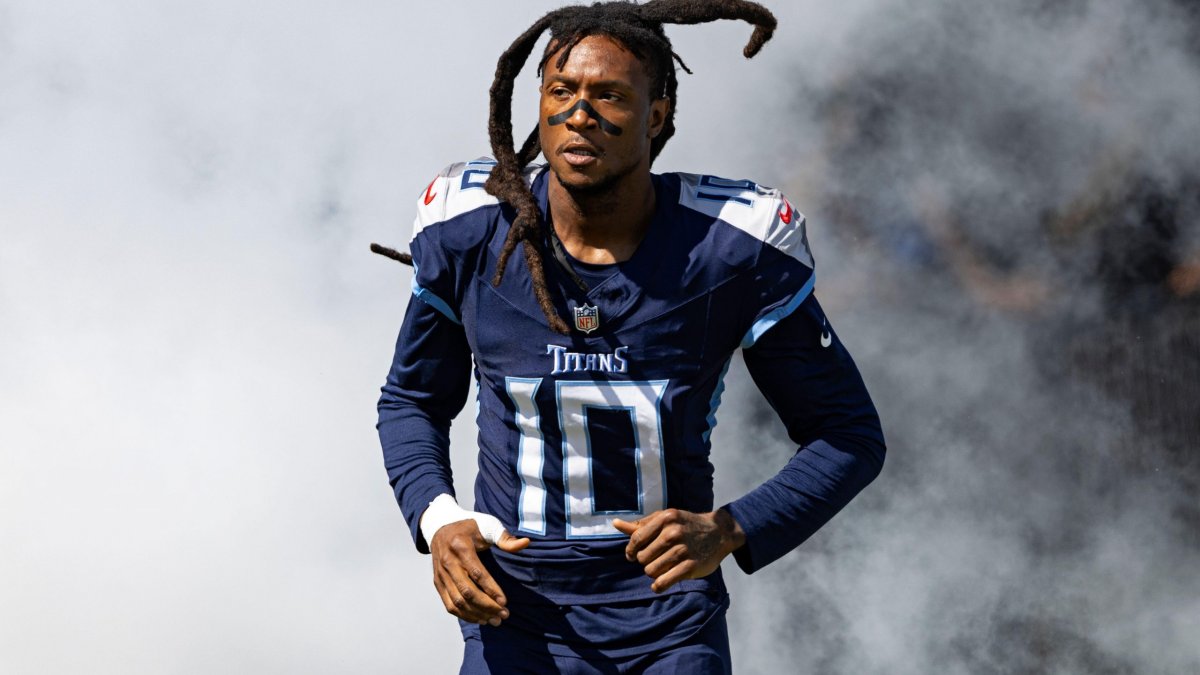
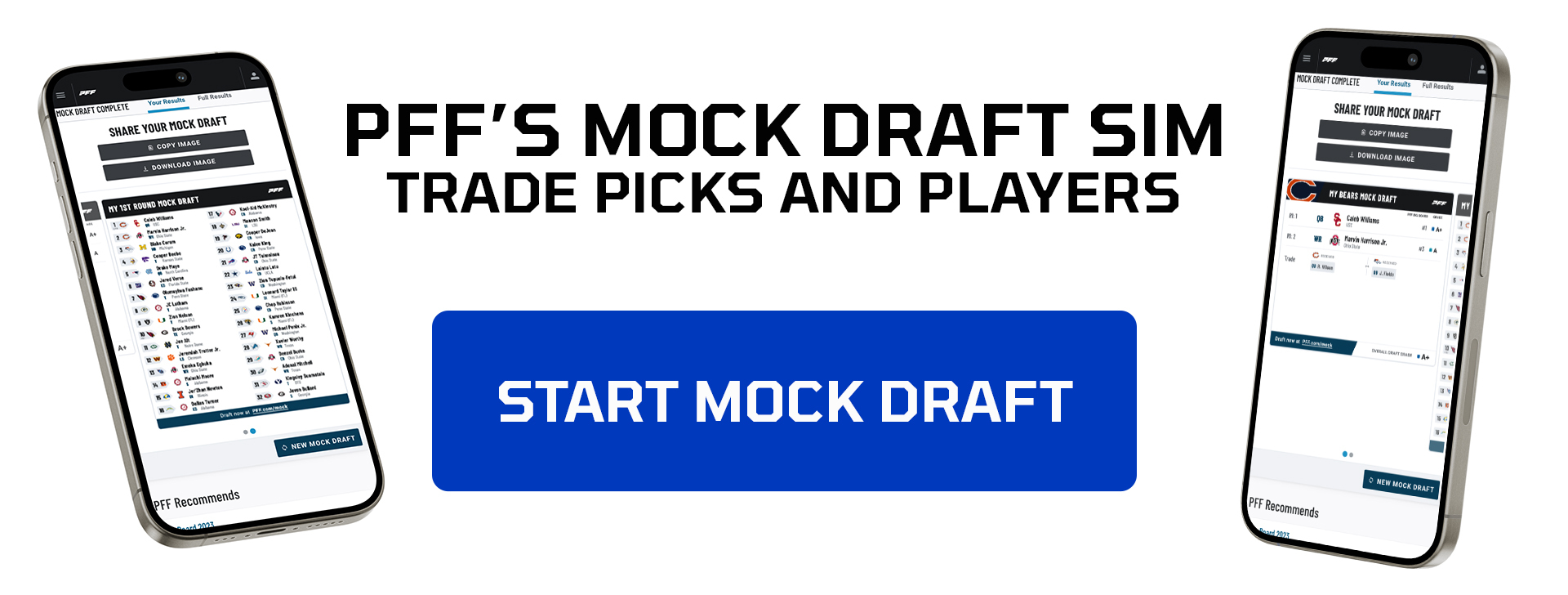

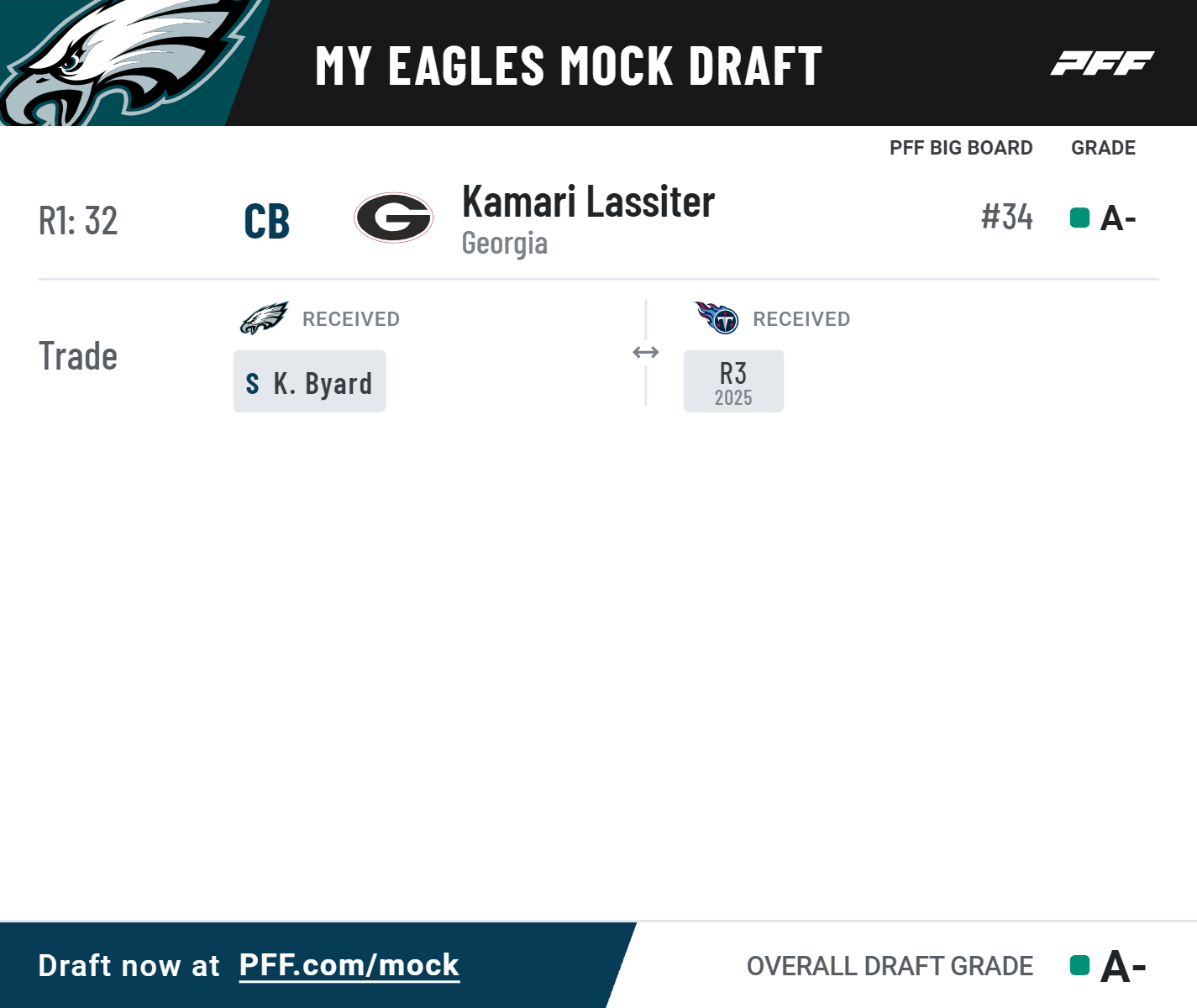
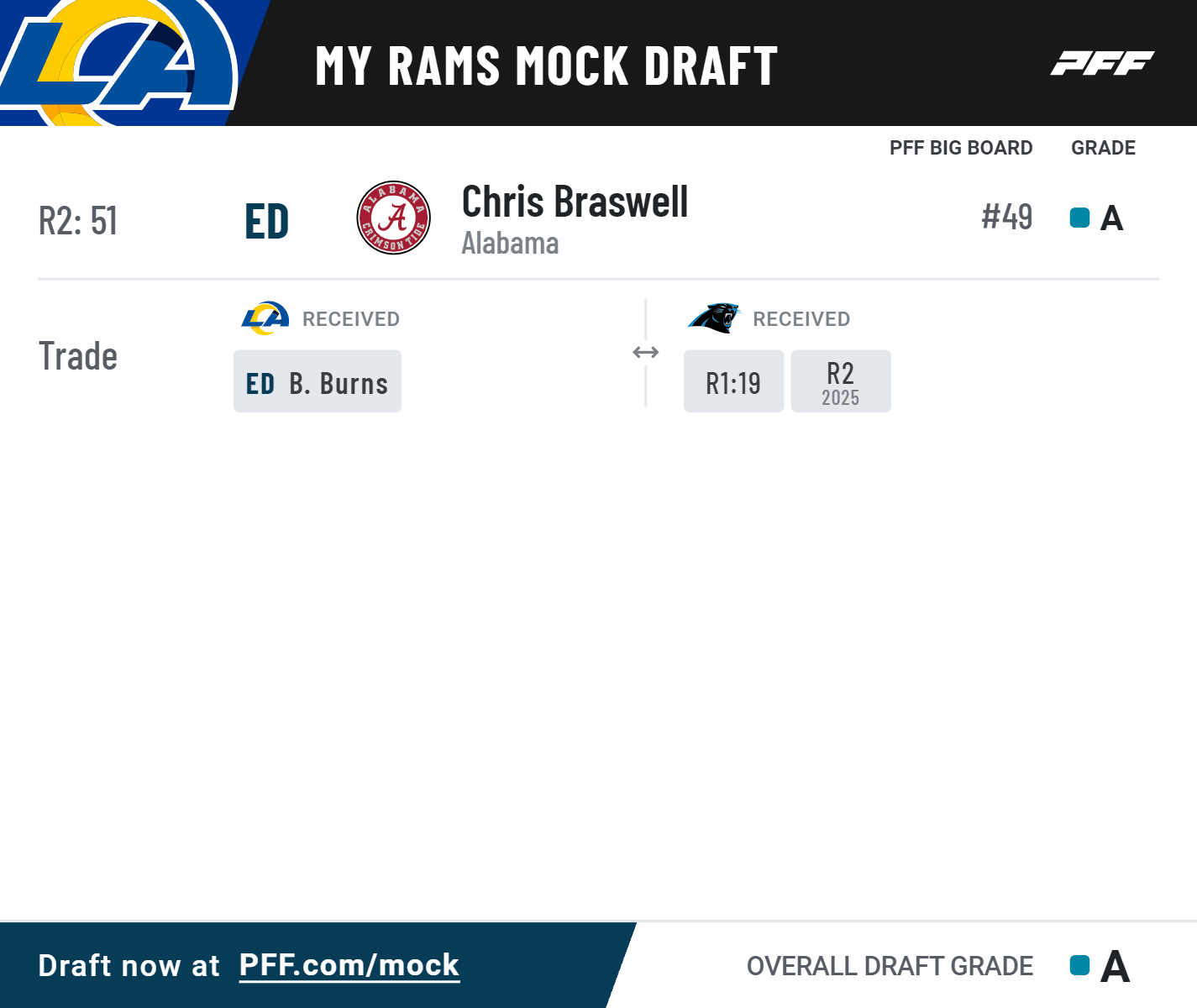
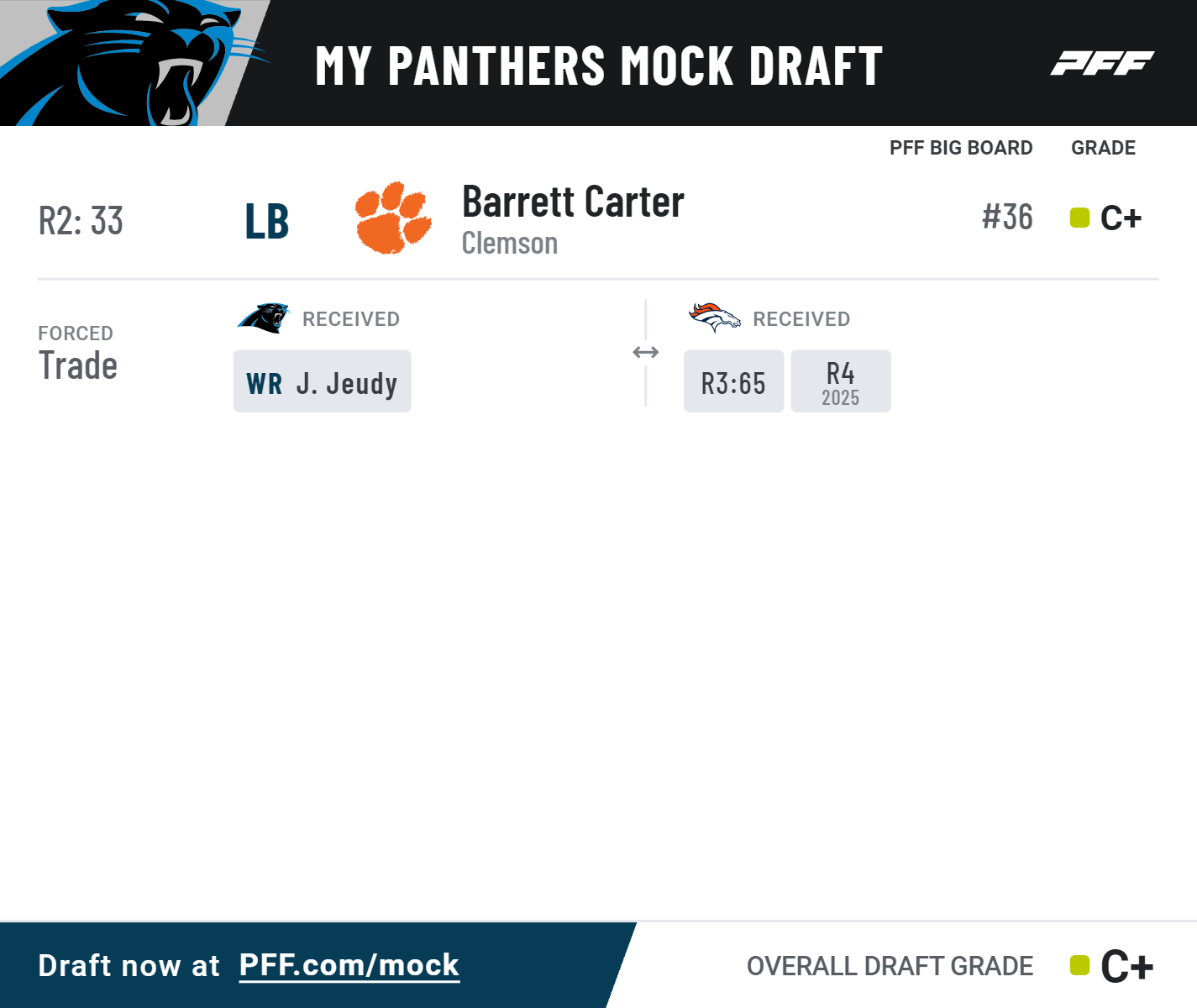
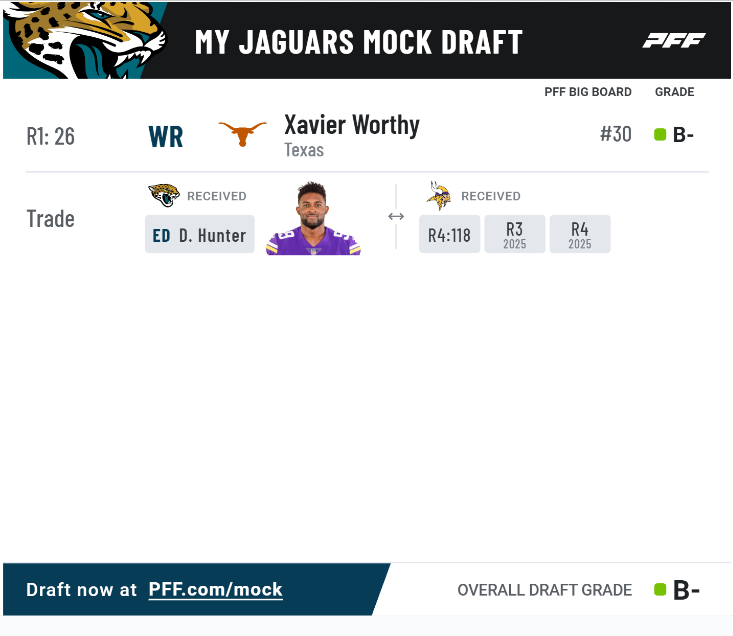
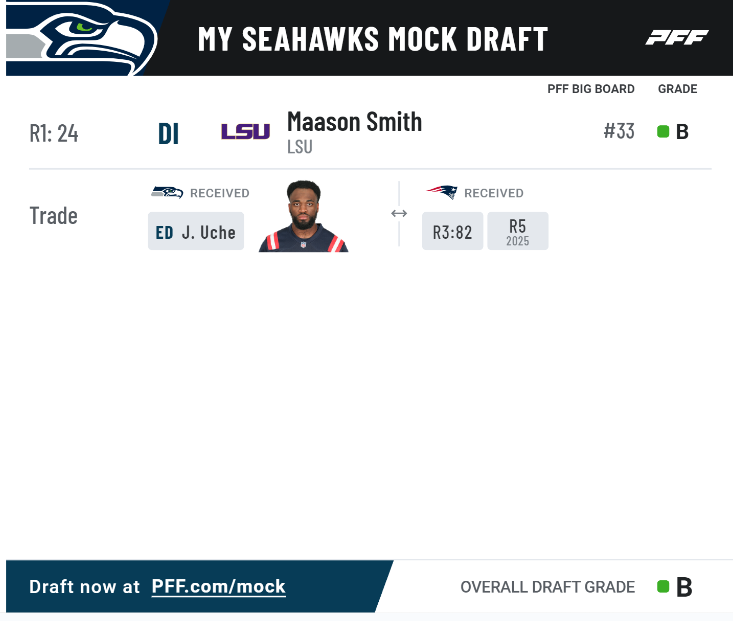
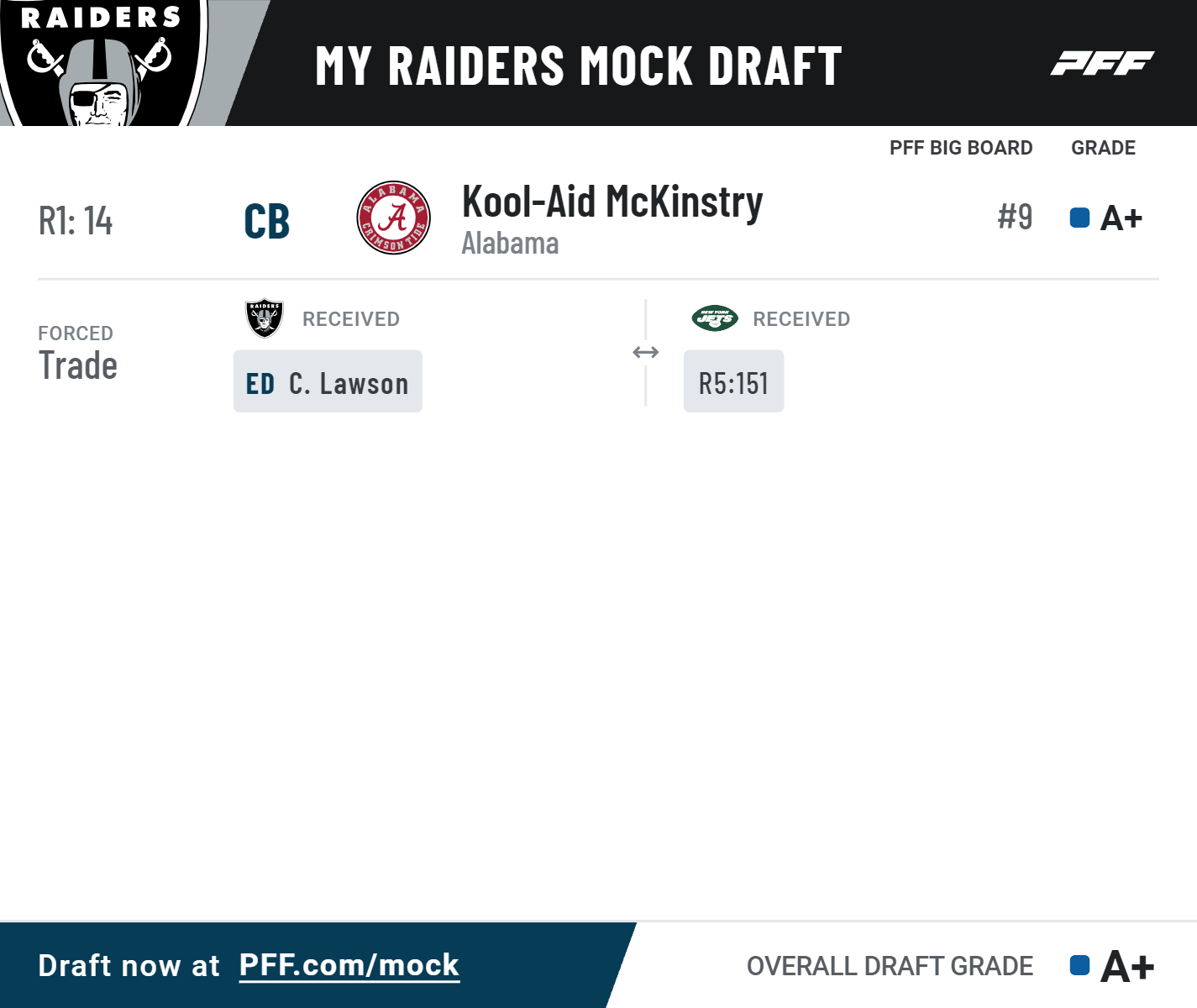
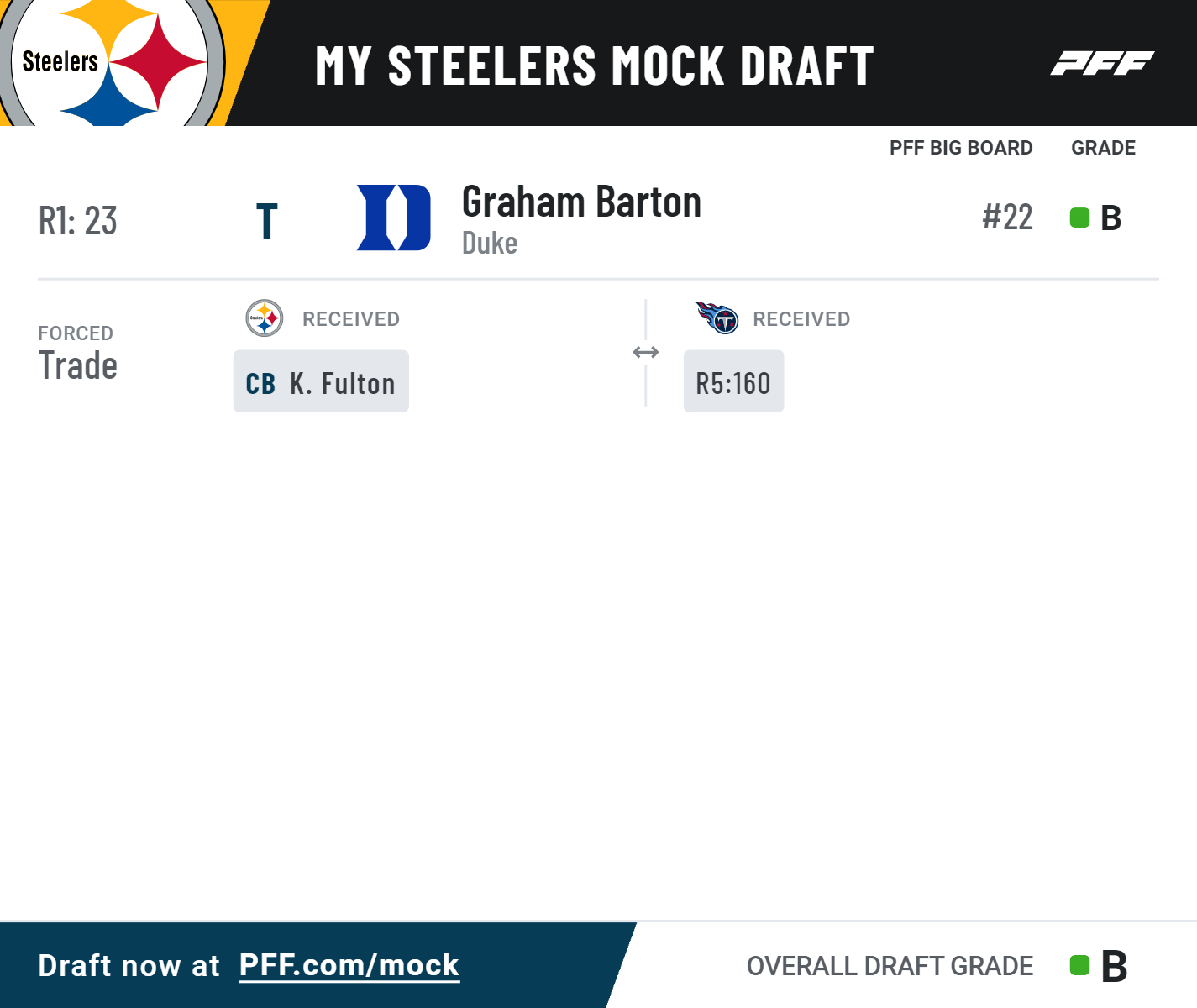
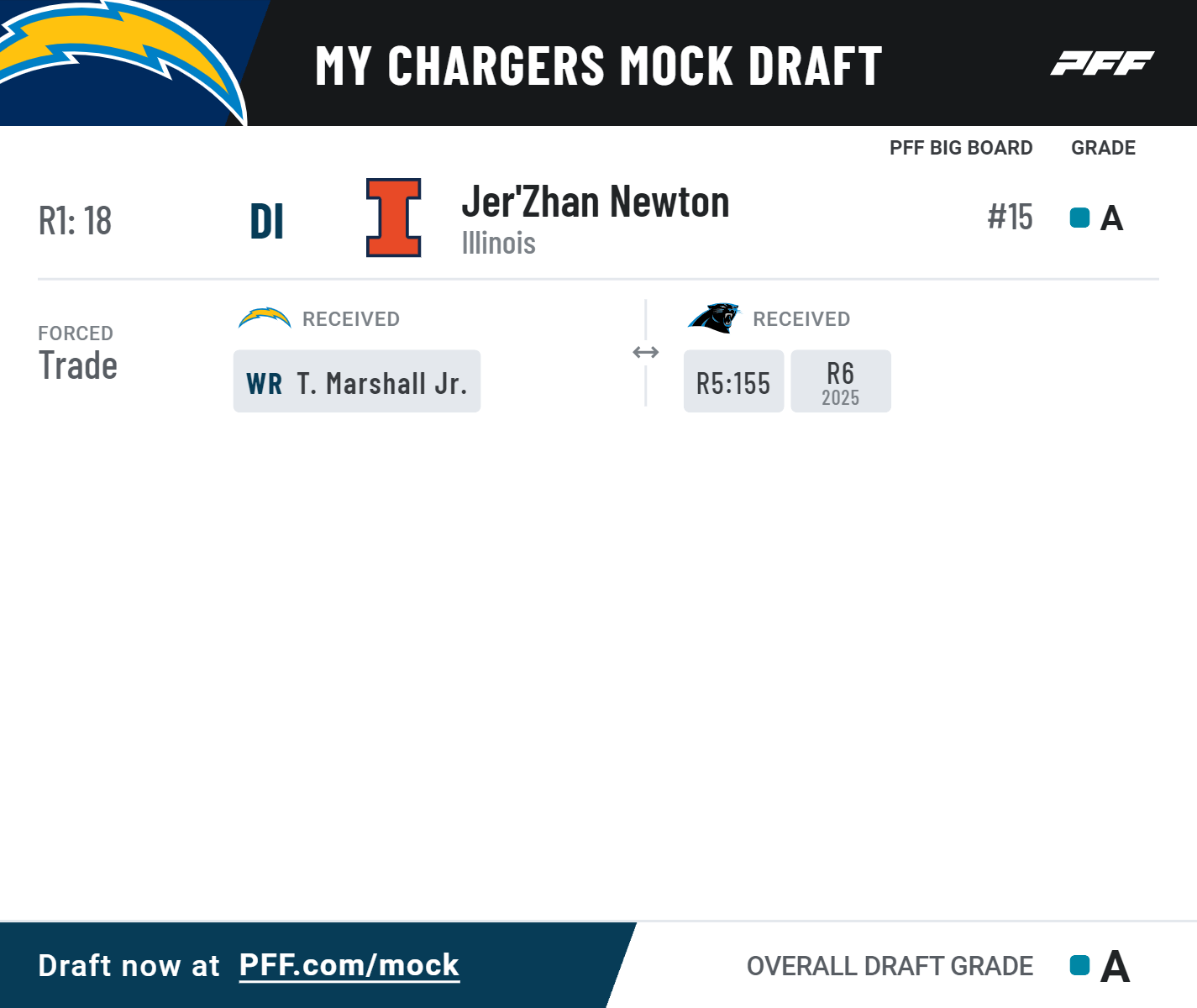


 © 2025 PFF - all rights reserved.
© 2025 PFF - all rights reserved.